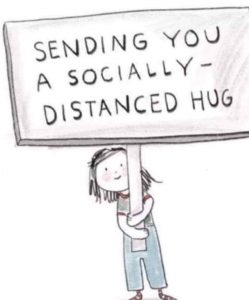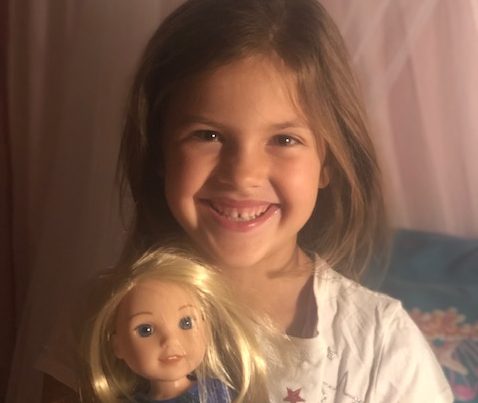
by Kathryn de Bruin | Apr 9, 2020 | Crisis
We all have inherent strategies for coping. Coping Strategies are especially important in times of crisis, because they keep us feeling safe and in control of our feelings.
One of the most underutilized tools in relationships is knowing what your loved one’s strategies are.
If you know their strategies, then you will be able to work out how to support your loved ones in this time of crisis. Comfort will look different to different people. Chances are you’ve already talked to your loved ones about how they handle stress, as we talked about in our last post. Click here to view great conversation starters to talk about stress with your families. But learning coping strategies adds another tool in your toolkit to help you better understand your relationships, and so that you know what to do to be effective and helpful in the emotional lives of your loved ones during this time. There are 3 more common strategies that I want to discuss with you briefly. We will have a blog breakdown of each of these, with this first one going over what a secure coping strategy typically looks like in relationships.
The 3 Common Coping Strategies Are: Secure, Anxious or Withdrawn.
Some folks have Secure Strategies which means they feel a range of feelings, but to a more limited degree than those with anxious strategies. They tend to be more hopeful and to have better problem-solving abilities as well as abilities to be creative when things are tough. They feel confident in sharing openly how they are doing, and they tend to have people that they can talk to in times of distress, and so they get more comfort and support. They are also soothed more easily and more quickly. They “bounce back”.
I think of my youngest daughter who will easily jump onto my lap and say exactly what she needs in that moment, for example, “Mommy, I need a hug”. But then the moment she feels better, she’ll be on her way again. If you’re a parent to a secure child, you are likely to know exactly how they are doing and this is because they let you know. Just because they are a have a secure coping strategy, doesn’t mean that they don’t have times they experience the other range of feelings and deal with crisis in negative ways. The secure strategy is the most flexible one, so people with secure might sometimes withdraw and other times be anxious. But overall they are able to find balance.

by Kathryn de Bruin | Apr 7, 2020 | Anxiety, Couples in Therapy, Emotions, Family Therapy
We all experience stress, and naturally want to be able to provide comfort to our loved ones.
This is our responsibility, and what helps us to feel like effective parents and partners. The bigger question is whether you know when your loved ones are distressed or not.
People show stress in different ways and sometimes it’s not always easy to tell. For instance, children who are depressed often don’t look sad, instead they get mad. Active children can get overstimulated and get even more active when they are feeling out of control. Some people get very quiet, some get very loud, some get obnoxious and some get funny. We all experience it and show it in different ways.
Here are some family conversation starters to learn this information, so that we can better read cues and know when to step in and to support one another:
- So we all feel calm at times, and we all get stressed out at times. How do you know when you are calm and when you are stressed?
- Where do you experience stress? Some people feel it in their bodies, some experience it in their minds, and some in their feelings. How about in your body? (i.e. heart racing, hands and feet sweaty, muscles activated, shallow breathing). Do you experience stress in your thoughts? (i.e. same thoughts over and over again, can’t stop thinking, worrying all the time, overly focused on one thing). Do you experience stress in your feelings? (i.e. sad, tearful, anxious, angry).
- What causes you stress? We all have different things that trigger us. Do you feel stress when you’re in trouble? When there is tension in the house? When you are bored? When you are called a certain word? When you feel blamed for something?
- How well do we know the members of our family. Who of us gets angry when we are stressed? Who gets super quiet? Who worries the most in our family? Who gets focused and busy? Who can’t stop talking and gets overexcited? Which of us feels it the most in their body? Who gets funny?
- When there’s stress in our family, what happens to our relationships?
- When “family member A” is stressed, what happens to us? Who notices? Who tries to help? Who gets upset too? Who is affected by it? Who turns away and gets scarce?
We discovered that our middle daughter feels tension. Any time there’s tension in our house, in whatever relationship is present, she feels it. She’s an empath, she dislikes the feeling of tension and would prefer it if everyone was just happy and calm all the time. Once we discovered this, we developed a strategy where she can come and stand close to my husband or I, anytime she feels the pressure. If she squeezes our hand, then it’s her way of saying, “I’m too stressed out and I need help calming down.” This way we know she is experiencing emotional dysregulation and can help her feel supported and calmer and not alone in these times of distress. This can help your child identify those times and feelings, and also help you as a parent better address the situation.
Knowing how our family handles stress can empower us – and cause us to change our interactions. Whether it is reframing a conversation to help prevent stress, or calming your loved one down after they have already experienced stress, knowing what causes them stress and the best way to address it will not only help your family in this crisis, but also with any difficulty to come.
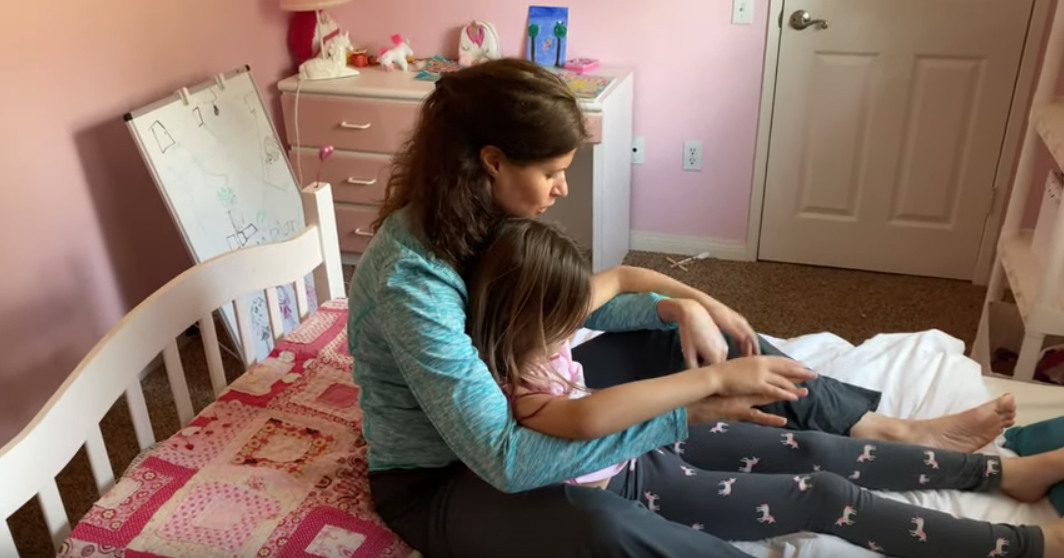
by Kathryn de Bruin | Apr 2, 2020 | Play Therapy
Some of us are really struggling at home. Others are having a wonderful time. In fact, there are a group of anxious children who are not even symptomizing right now because they are so happy to just be home with their loved ones. They feel safe and cared for, and they are relieved from the pressures of their busy and possibly over-scheduled everyday lives. This can be the perfect time to introduce therapeutic play to your children, regardless of which category they fit in.
Fact is, we have time at home, and we have time to play. So how do we get ourselves to play, and how do we play in a way that is therapeutic to everyone involved?
If you don’t enjoy playing with your children, don’t despair! You are not alone. Playing with children is very important, but it doesn’t come naturally to everyone. Don’t get stuck on overthinking this. Rather, think about something that you do enjoy doing. If you had to play something, what would it be? Your child will enjoy it because you enjoy it. So, do this thing, albeit kicking a ball, playing marbles, a board game you like. Be true to yourself, and soon your child will all about it too. Because honestly, they mostly just want to be with you!
If you’re still out of ideas, there are a number of things that you can do with your child, such as the activities listed below. These are Theraplay-based activities.
To learn more, here is a link to The Theraplay Institute’s website: https://theraplay.org/
Here is a link to their Activities book: https://theraplay.org/product/theraplay-activities-flip-book/
I wanted to demonstrate some of these Theraplay-based activities with my 6-year-old daughter. It feels really good as a parent to be spending this kind of quality time with her, and I can feel the connection between us as we laugh together, and share these special moments! I also notice how her behavior changes because her love tank is filled up with this one-on-one play time.
Click on each game below to see the demonstration video:
These games can be played with children of different ages. Try them and see which ones you enjoy!
I also asked my 11-year-old son to make a scene in the sand about Coronavirus. He created a double-sided scene and asked me to guess which side I thought was the virus. Reluctantly I said the bigger, scarier side and he replied “Yes!” Towards the end of our time I asked him what he would do if he could change one thing. He proceeded to punch the virus and destroy that part of the scene. He looked so powerful as he did this.
Letting him create this scene helped me to know how he was viewing the virus. From there it led to a longer conversation between us, but it all started with simply observing his artwork and commenting on what I saw.
Play doesn’t need to be long and complicated, it can simply be bringing your child to do something you love together, giggling over some games, or creating a scene to see how they view the world. Hopefully this helps give you some ideas to do together when the days seem extra long, and create some positive bonding memories in the process!
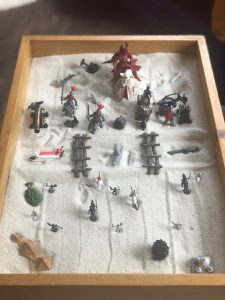

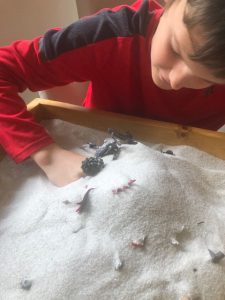

by Kathryn de Bruin | Mar 31, 2020 | Anxiety, Family Therapy, Therapy
I’m thinking about you all as we are going through this environmental crisis that is hitting close to home for all of us.
Some families and couples that I’ve checked in on are rallying together against this common enemy and are feeling stronger in their relational dynamics than usual. This is wonderful news! Other families/couples are struggling more than usual because this crisis is surfacing any crack in their relational foundation and it’s hard for them to get through the day without their negative cycle getting triggered. My heart especially goes out to these families who are feeling that heaviness, and I’ve wanted to put together a series of blogs that gives some coping tools to get through this crisis together as a family.
Blogs 1-3 start with three very different but common strategies many of us utilize for coping: Secure, Anxious and Withdrawn. Obviously we can fluctuate between them at different points, but we often land on one or two that are most comfortable for us in times of uncertainty.
In blog 4 we dive into recognizing our own personal and unique family strategies – this will help give an idea of how your family would like to receive love based on their coping strategy, and what comforts them best during this time of stress (and how you best receive it!)
For our final blogs we get to talking about the virus specifically. I’ll go through questions we should be asking as a family and ways to prepare, ways to utilize play therapy techniques with your child to check in on how they are doing, and finally talking about how the elements of “challenge” and “trauma” play into this difficult time.
My hope in this blog series is yes, to help everyone learn coping techniques, but to also bring light and recognition, perhaps a few “aha!” moments, and awareness of how to better get through this individually and together!
